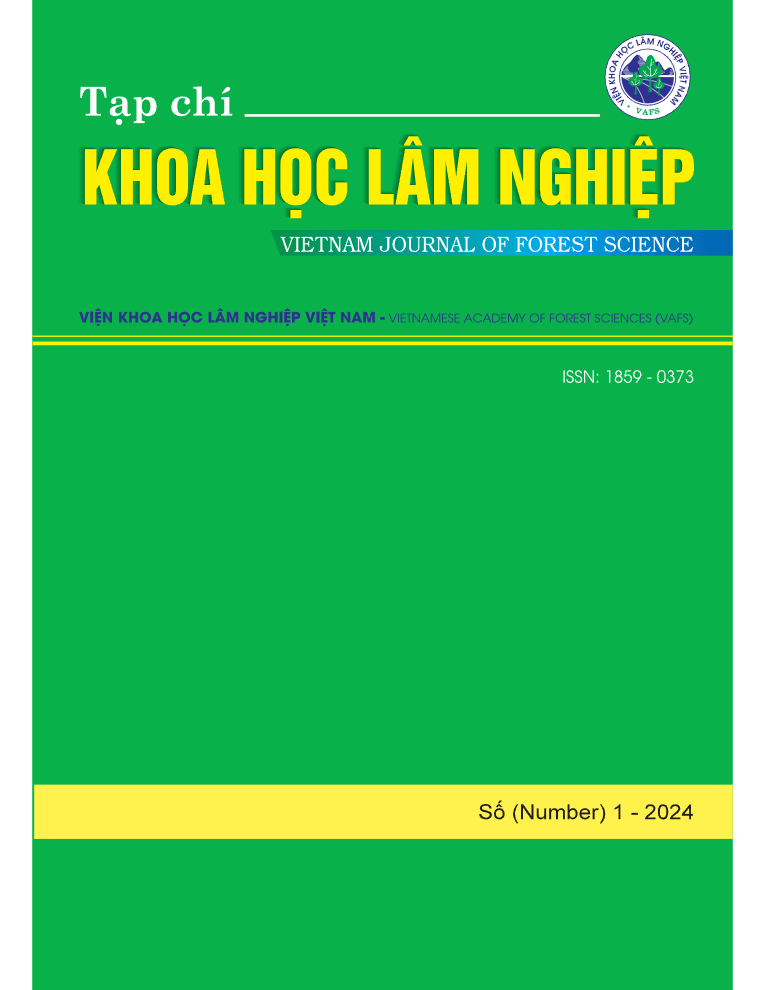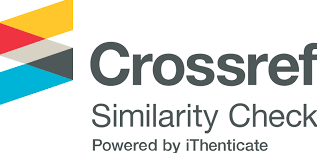EVALUATING THE INHIBITORY EFFICACY OF BACTERIA STRAINS AGAINST WOOD PATHOGENIC FUNGI
Keywords:
Antifungal bacteria, Bacillus amyloliquefaciens, Chitinophaga varians, wood-damaging fungiAbstract
Characterization of bacterial strains against wood pathogenic fungi is a critical step to evaluate their potential. In this study, the bi-culture and agar diffusion methods were used to evaluate the inhibitory efficacy of 03 bacterial strains isolated in Lang Son province including Chitinophaga varians, Bacillus subtilis and Bacillus amyloliquefaciens against 04 common species of wood-damaging fungi and the influence of some culture conditions on the broth-derived extracellular fluid’s antagonistic activity were also investigated. The results showed that all of 03 bacterial strains had strong antagonistic activity against the fungi Aspergillus niger and Aureobasidium pullulans, and weak antagonistic activity against the fungi Lasiodiplodia theobromae and Trichoderma atroviride. Based on agar diffusion test, Bacillus amyloliquefaciens was preliminarily assessed as the most potential bacterial strain for further research and application, whereas Chitinophaga varians was a new discovery as the role of biocontrol bacterial agent against wood-damaging fungi. The results also showed that adding irons (II) to LB medium reduced the extracellular fluid’s antagonistic activity. The optimal culture duration to obtain antifungal extracellular fluid against Aspergillus niger of Chitinophaga varians, Bacillus subtilis, Bacillus amyloliquefaciens were 3 days, 1 day and 1 day, respectively.
References
Bonaterra, A., Badosa, E., Daranas, N., Francés, J., Roselló, G. and Montesinos, E., 2022. Bacteria as biological control agents of plant diseases. Microorganisms 10(9): 1759.
Dimopoulou, A., Theologidis, I., Benaki, D., Koukounia, M., Zervakou, A., Tzima, A., Diallinas, G., Hatzinikolaou, D. G. and Skandalis, N., 2021. Direct antibiotic activity of bacillibactin broadens the biocontrol range of Bacillus amyloliquefaciens MBI600. mSphere 6(4), e0037621.
Gowtham, H.G., Murali, M., Brijesh Singh, S., Lakshmeesha, T.R., Narasimha Murthy, K., Amruthesh, K.N. and Niranjana, S.R., 2018. Plant growth promoting rhizobacteria - Bacillus amyloliquefaciens improves plant growth and induces resistance in chilli against anthracnose disease. Biological Control 126: 209-217.
Luo, L., Zhao, C., Wang, E., Raza, A. and Yin, C., 2022. Bacillus amyloliquefaciens as an excellent agent for biofertilizer and biocontrol in agriculture: An overview for its mechanisms. Microbiological Research (259): DOI:10.1016/j.micres.2022.127016.
Nguyễn Thị Kim Cúc, Trần Thị Hồng, Phạm Thị Thúy Hoài, Phạm Việt Cường, 2014. Phân lập vi sinh vật đối kháng một số nguồn nấm bệnh thực vật và đánh giá hoạt tính của chúng in vitro và in vivo. Tạp chí Khoa học và Công nghệ 52(4): 419-430.
Rahman, M.A., Begum, M.F. and Alam, M.F., 2009. Screening of Trichoderma isolates as a biological control agent against Ceratocystis paradoxa causing pineapple disease of sugarcane. Mycobiology 37(4): 277-285.
Sharma S., Kumar S., Khajuria A., Ohri P., Kaur R. and Kaur R., 2020. Biocontrol potential of chitinases produced by newly isolated Chitinophaga sp. S167. World journal of microbiology & biotechnology 36(6): 90.
Soytong K., 1989. Antagonism of Chaetomium cupreum to Pyricularia oryzae: a case study to biocontrol of a rice blast disease. Thai Phytopathol 9: 28-33.
Wang B., Yuan J., Zhang J., Shen Z., Zhang M., Li R., Ruan Y. and Shen Q., 2013. Effects of novel bioorganic fertilizer produced by Bacillus amyloliquefaciens W19 on antagonism of Fusarium wilt of banana. Biology and Fertility of Soils 49(4): 435-446.
Wei Y.H., Wang L.F. and Chang J.S., 2004. Optimizing iron supplement strategies for enhanced surfactin production with 6 + Bacillus subtilis. Biotechnol Progr 20: 979-983.
Woźniak, M., 2022. Antifungal agents in wood protection - A review. Molecules (Basel, Switzerland) 27(19): 6392









